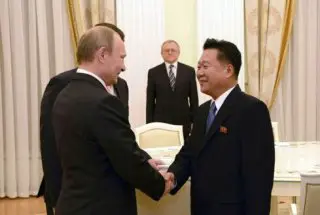The tragic death of an 11-year-old boy at the hands of an unlicensed village doctor earlier this week has once again brought into spotlight the lack of qualified doctors in rural China.
The boy from central China's Henan province had a sore throat and visited an illegal clinic in Ruzhou City, where the "doctor" Zhang Wenli pricked his tonsil with a needle. The boy died shortly afterwards from loss of blood. Zhang absconded with his family.
This is just the latest calamity to result from treatment by unlicensed practitioners in China's countryside. At the end of last month, a 70-year-old "midwife" was sentenced to 10 years in prison after the death of a patient.
Dilemma of qualification
A national guideline encouraging medical workers in rural areas to get registered, receive training, pass an exam and get a license has been in force since 2004.
Tashi Yang, head of the health bureau in Muli Tibetan Autonomous County in southwest China's Sichuan Province, told Xinhua that many older medical workers were "barefoot doctors" who had difficulty getting a license.
These people were basically students or simple villagers trained in first aid after the founding of the People's Republic of China in 1949. They delivered basic medical services in China's vast, remote rural areas, where previously healthcare had been primitive.
These services were essentially free and were crucial to the doubling of life expectancy in China from 35 years in 1949 to 68 years by 1978.
These practitioners, however, were far from well educated. "They prescribed based mainly on their personal experiences, and didn't know much about medical theory," Yang said.
In Sichuan, since 2013, a regulation has required that all village practitioners must have licenses. "None of the 100 practitioners in Muli passed the exam that year," Yang said.
Situation was similar in Longlin county of Guangxi Zhuang Autonomous Region. "Only four people have passed the exams and got licenses since 1999," said Yang Zhengxiang, head of Longlin health bureau.
Shortage of medical workers
While the old practitioners have problems with licenses, young people are reluctant to work in villages.
In Longlin, about 150 village practitioners take care of 400,000 people, and 42 percent of the doctors are over 40. In Mianyang, Sichuan, the average age of village practitioners is 56. In north China's Shanxi province, nearly 70 percent of village practitioners are above 40. Only 1.2 percent of the Shanxi village doctors are university graduates, and 23 percent haven't received any formal medical training at all.
There are worries that a few years later, retirement of the old doctors will fuel the shortage of medical workers in rural areas.
Zhang Xiaoqin, 32, is the only doctor in Jiajiazhang Village. Her monthly salary is 800 yuan (about 128 U.S. dollars). Most villagers are elderly people whose children work far away in the cities. "I bring medical services to their homes," she said. "I am very busy, and I know they need me."
Owing to qualified doctor shortages in rural China, many people like the dead boy's family go to unlicensed clinics for treatment.
The State Council, China's Cabinet, on Monday approved a plan for better rural medical care by deploying more doctors in the countryside.
The plan sets out to ensure that there is one doctor for every 1,000 rural residents. These rural doctors will get extra training for free, better further education opportunities, preference in their future careers, along with higher pay and pensions.
"I hope there will be more preferential policies to help qualified village doctors, bringing hope to them as well as to those who need them," Zhang said.
 简体中文
简体中文

